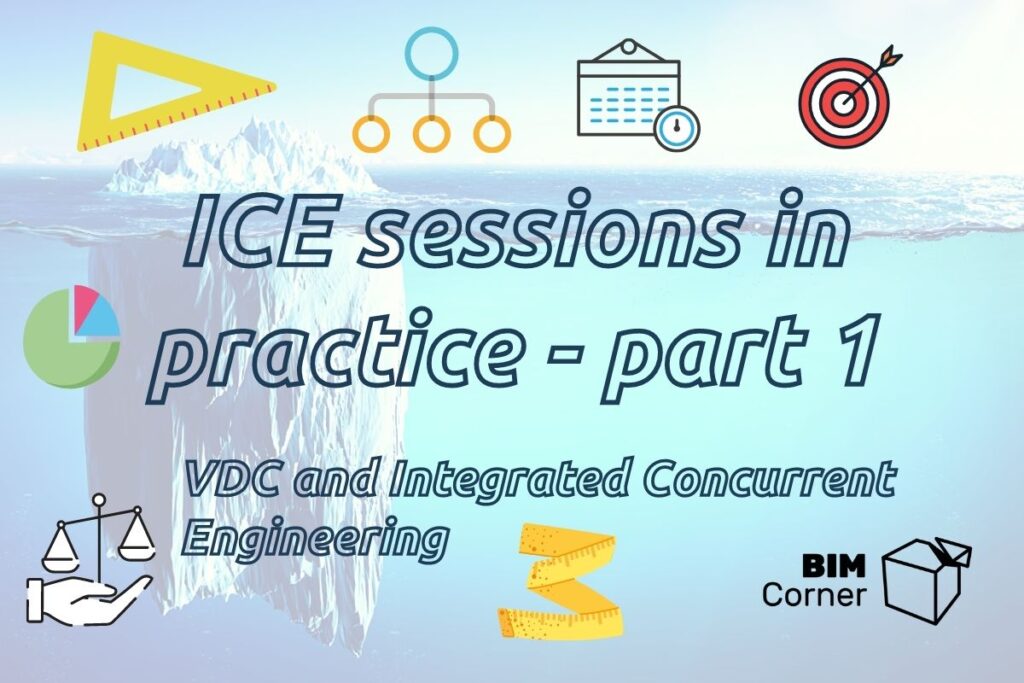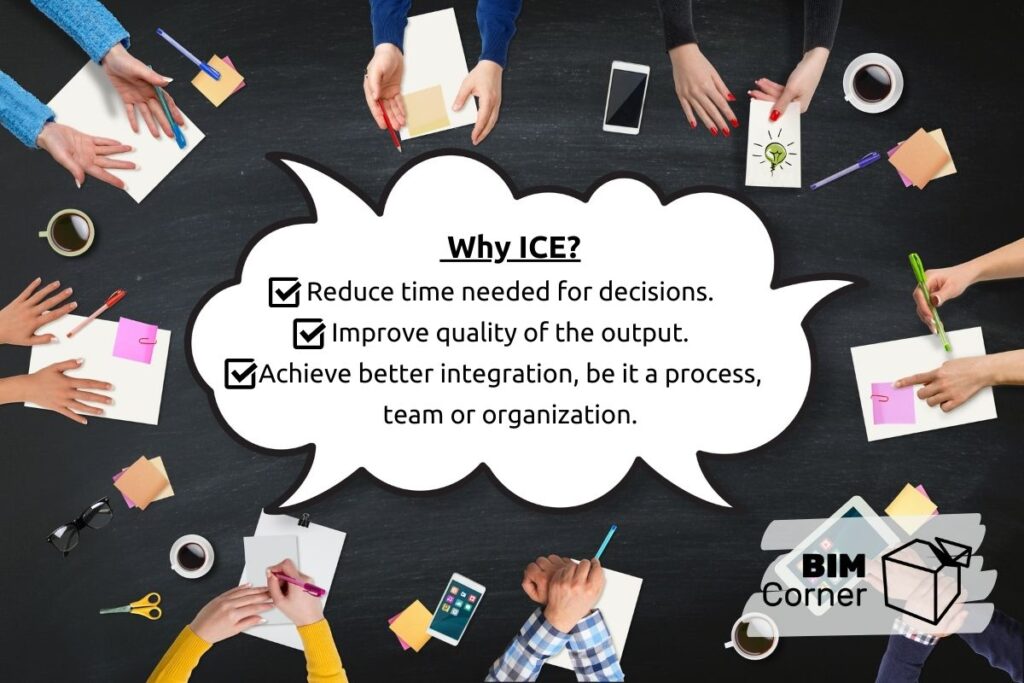When I started my first real job after finishing university as a structural designer, I was puzzled by the number of meetings that were going on. I was invited to some of them, while to some I was omitted, even though I worked on a given project. Anyway, even if I was participating, usually I just sat for one or two hours and listened to the discussions. I was happy that I did not need to prepare anything for the meetings or, what would be even worse, lead them. Fast forward 10 years and suddenly I am in the center of two projects, with meetings on Teams going on everyday and need for almost immediate clarifications. How to handle the meetings and all the coordination, with little time, a lot of stakeholders, complex projects and huge expectations from the client?
One of the first things that come to my mind is that the meetings need to be effective. What does it mean? As described in this article, effective meetings are when:
- They achieve the meeting’s objective.
- They take up a minimum amount of time.
- They leave participants feeling that a sensible process has been followed.
I like this definition. As with everything, easier said than done:-) However, one of the possible tools that we can use to achieve those goals is an ICE session, part of the VDC methodology. You can read the definition of the ICE session in our previous article: Everything about ICE meetings in VDC – Part 1
And in this article, I will show you the practical use of ICE sessions on projects. Feel invited to read on!
This post is a continuation of the series EVERYTHING ABOUT VDC.
Table of content
In this article we will cover those topics:
1. Why ICE session in VDC?
-
- Reduce the time needed for decisions.
- Improve the quality of the output.
- Achieve better integration, be it a process, team or organization.
-
- Integrate – gather many disciplines, people with experience and knowledge.
- Concurrently – overcome challenges together, at the same time and place.
- Engineering – by defining and solving a particular problem and agreeing on a quality-assured solution without a need for rework or delay.
What?
- Session conducted with ICE methodology.
Integrated Concurrent Engineering (ICE) is a methodology for effective, rapid and reliable product and process design..
Stanford Center for Professional Development
2. ICE in practice in VDC
Description of the case study
- Architect – wants to behold the vision of how the stadium will look like.
- Structural designer – means that he made correct calculations and does not agree to redesign it.
- The client – does not want any changes in order for the contractor and possible more work for designer and architect (consequences for time and money).
- The contractor with his supplier – wants to spare some material (money), build faster (time) and prepare change of orders (extra money).
- The contractor sees the problem, but does not ask any questions, proceeds as normal and only when he is faced with the issue on the construction site, he says: ‘It is the designer’s fault, we are just building what has been designed’.
- Or the designer finds this out after he delivered the project to the client and does not do anything, in the hope that ‘nobody will notice it, and it was the architect who wanted this structure’.
- Or the client sees the challenging design from the start, but hopes that the contractor will solve all of his problems – in the end he is getting paid for it, or what?
Preparations
2.1. Focus for the meeting
Start with the agenda and the following points:
Shortly describe what the main topic (or topics) for the meeting is.
Example (based on our case study):
- The roof over the tribunes.
2.2. What is the result that you want to achieve?
- It is the general reason for the meeting.
- This point should be short and precise.
- You should be able to answer yes/no if the result was achieved.
- You can have more than one point, at the same time remember not to be too ambitious.
Example:
- Agree on the structural solution for the roof over the tribunes.
2.3. Identify relevant participants from different stakeholders
Remember that you must include the people who can make decisions, as this is the main reason for the ICE session: to agree and decide on the solution.
Example:
- Project manager from the client.
- Assisting project manager from the client (you).
- Design manager from the client.
- Main architect.
- Lead designer (design office).
- Structural designer (design office).
- Project manager from the contractor.
- Site manager from the contractor.
- Supplier of steel structure for the contractor.
2.4. Divide tasks and responsibilities
- Describe what each person should prepare in advance.
- In that way, you will make people responsible for the result.
- Name the facilitator of the session – in our example, it can be you.
Example:
- Project manager from the client. – Present a description of the current status and the challenge.
- Assisting project manager from the client (you). – Prepare the meeting agenda and take notes. Lead (facilitate) the ICE-session.
- Design manager from the client. – No preparations needed.
- Main architect. – Present the idea behind the current solution from the architectural point of view.
- Lead designer (design office). – Prepare documentation of the structural calculations and the resulting tensile stresses.
- Structural designer (design office). – Prepare and show the 3D model, drawings and documentation.
- Project manager from the contractor. – Present the calculations from an independent designer, showing very high tensile stresses and consequences for the structure.
- Site manager from the contractor. – Prepare the planned method and assume time schedule for assembly based on the current and optimized solution.
- Supplier of steel structure for the contractor. – Describe the proposal for the optimization and change of the structural system.
2.5. Create the agenda for the session
- Describe each point in the agenda.
- Put a responsible person for each task.
- Set planned time to discuss each point.
- Consider splitting a group into 2, using break out rooms.
- Plan breaks, especially if the meeting is over 1,5 hours.
Example:
- Make a short introduction into the ICE-session with going through the aims of it and the agenda. – ICE-fasilitator (in our case you, the ass. project manager). – 5 minutes.
- Presentation round of the participants. – Project manager from the client – 5 minutes.
- Present description of the current status and the challenge. – Project manager from the client – 10 minutes.
- Present the considerations and consequences of the current design. – Project manager from the contractor. – 15 minutes
- Discussion about the considerations from the contractor. – Project manager from the client – 15 minutes.
- Break – 15 minutes.
- Present proposal of the optimized solution. – Supplier of steel structure for the contractor. – 10 minutes.
- Discuss and decide on the solution. – Project manager from the client – 25 minutes.
- Sum up and define next action points. – Project manager from the client – 10 minutes.
- Evaluation of the ICE-session. – ICE-fasilitator – 15 minutes.
2.6. Place for the session
- Choose the type of meeting – on-line or a physical meeting in one room?
- If it is possible to have a physical meeting, make sure that you have the necessary facilities (like size of the room, huge screens, a system for sharing a screen for an individual laptop and so on).
- If the meeting is planned on-line, choose a method of communication – for example, Teams, Skype or Zoom.
- Consider having break-out rooms.
Example:
- Meeting to take place on Teams, 05.05.2021, 9:00 – 12:00.
2.7. Invitation
- Send a meeting invitation at least XX days in advance (depending on the issue, it can be anything from for example 14 to 3 days) to the relevant participants from different stakeholders.
- Make sure that the people who can make decisions can attend the session. If not, they should delegate someone else in their place who can decide.
- Attach the meeting agenda.
- If it is a first ICE-session on the project, take individual contact with the participants and make sure that they will make the necessary preparations assigned to them.
Other tips
- Have base for discussion ready – prepare the model, drawings and all necessary documentation, so that you do not have to look for it during the meeting. Remember that use of BIM is crucial so that everybody has the same understanding and base for the discussion.
- Share the screen and have the camera on. Ask others to do the same, although do not press it if somebody does not want to have the camera on. However, it is much easier to talk when you see other people, not just a black screen.
- Be open during the discussions and focus on the challenge, not on people. You need to find a good technical solution.
Be effective and pay attention to time. Interrupt if someone is talking off topic or something takes too much time, without going forward.
Technical solution vs money
Please note, that in this example, during the ICE-session we are focusing only on finding a good, optimized technical solution that all of the parties can accept. In the end, of course, somebody has to pay for this. Design office, if they made a mistake.The contractor, if they priced the original solution low and are not correct in their considerations. The client, if he wishes to make changes into the design and does not have ground to claim the designer. On the other hand, maybe it is possible to find some possibilities to spare material and time during the session? Maybe the steel supplier can present an easier solution to produce and assemble and the gains will be divided 50% – 50% between the main contractor and the client?
The bottom line is: you need to collaborate with different stakeholders if you want to spare time and energy to findand decide on the way forward.
Summary - ICE session in practice part 1
ICE is not a meeting - it is a working session.
In this first part of ICE session in practice, we got to know why we should use this part of the VDC-methodology.
We described a case study – a project and an issue that could happen in real life – and based on it, made preparations for our first ICE session. In the following article, we will look at next steps to put all of the data from preparations into one file that will be used during the session as the action log, comments and base for metrics.
Remember, that there are many possibilities for conducting an ICE-session and each company can have a slightly different manner of doing it. In this article, we are assuming a simple example how ICE-session can be prepared and executed, without using complicated resources or software – all of this can be done in Excel and free .ifc viewers.
This post is a continuation of the series EVERYTHING ABOUT VDC.












